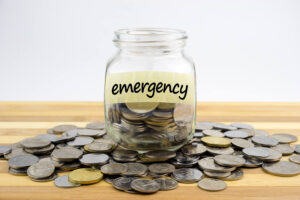
Financial stability is a goal we all aspire to achieve, but life has a way of throwing unexpected challenges our way. This is where the concept of an emergency fund, often referred to as a “financial lifesaver,” comes into play. In this article, we’ll explore the significance of an emergency fund and how it can secure your financial future.
The Unexpected Nature of Life
Life is full of surprises, and not all of them are pleasant. Unexpected events such as medical emergencies, car repairs, job loss, or natural disasters can bring sudden financial strain. Without a safety net in place, these situations can disrupt your financial stability and long-term goals.
The Importance of an Emergency Fund
An emergency fund is a dedicated savings account that is designed to cover unforeseen expenses or emergencies. Here’s why it’s a financial lifesaver:
- Financial Security: An emergency fund provides a safety net, offering financial security in times of need. It ensures you don’t have to rely on loans or credit cards with high-interest rates to cover unexpected expenses.
- Reduced Stress: Knowing that you have funds set aside for emergencies can significantly reduce stress and anxiety during challenging times.
- Preventing Debt: An emergency fund prevents you from accumulating debt to cope with sudden expenses, which can lead to a cycle of debt that is hard to break.
- Preserving Financial Goals: Without an emergency fund, you might be forced to dip into your long-term savings or investments to cover emergencies, hindering your progress toward financial goals like homeownership or retirement.
Building an Emergency Fund
To build a reliable emergency fund, consider the following steps:
- Set a Goal: Aim to save at least three to six months’ worth of living expenses in your emergency fund. The exact amount can vary based on your circumstances and comfort level.
- Create a Budget: Develop a budget to understand your income and expenses. Allocate a portion of your income to your emergency fund each month.
- Automatic Savings: Set up an automatic transfer from your checking account to your emergency fund savings account. This ensures consistent contributions.
- Prioritize High-Interest Debt: If you have high-interest debts, such as credit card balances, prioritize paying them down while simultaneously building your emergency fund.
- Keep it Liquid: Keep your emergency fund in a savings account or money market account that is easily accessible when needed.
- Refill After Use: If you need to dip into your emergency fund for a genuine emergency, make a plan to replenish it as soon as possible.
The Ideal Size of an Emergency Fund
The ideal size of an emergency fund varies based on individual circumstances. Factors to consider include the stability of your job, the number of dependents, and the nature of your monthly expenses. A general guideline is to save three to six months’ worth of living expenses, but some individuals aim for a year’s worth.
Conclusion
An emergency fund is your financial lifesaver when life takes an unexpected turn. It offers peace of mind, reduces financial stress, and safeguards your long-term financial goals. While building an emergency fund may require discipline and commitment, the security and stability it provides are invaluable. Consider it an essential part of your financial planning and a key element in securing your financial future.
